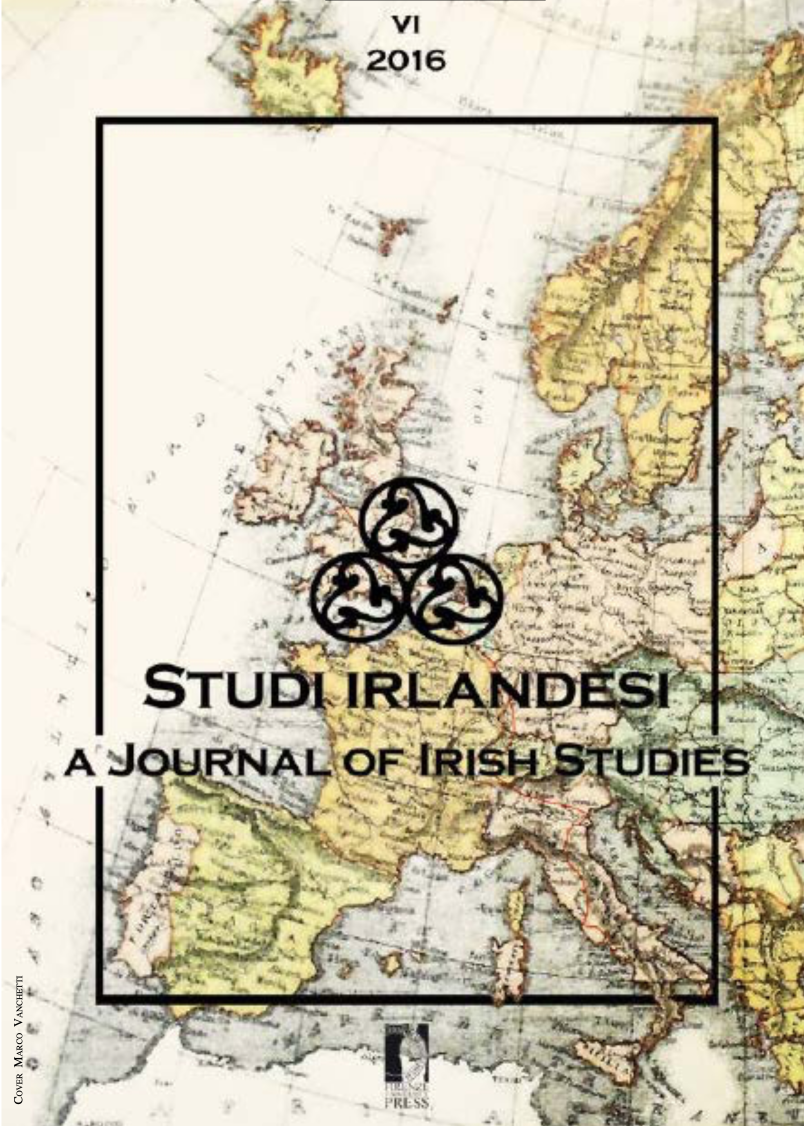Miscellanea
Pubblicato 2016-06-09
Come citare
Reinisch, D. (2016). Political Prisoners and the Irish Language: A North-South Comparison. Studi Irlandesi. A Journal of Irish Studies, 6(6), 239–258. https://doi.org/10.13128/SIJIS-2239-3978-18464
Abstract
The Irish language is witnessing a revival in some parts of Ulster.This revival is most visible in Belfast where An CheathrúGhaeltachta
(Gaeltacht Quarter) was founded to promote the Irish language.
While Irish was marginalized during the conflict in the North, Belfast,
for example, had more Gaelscoileanna (Irish-language schools)
than any other city in Ireland except Dublin and Cork in 2013. One
of the most important aspects for this development was the release
of the Irish Republican prisoners following the signing of the Good
Friday Agreement in 1998. In contrast to the North, although considered
as the national language in the southern Republic of Ireland,
the Irish language is further declining in the South. Thus, while the
former Republican prisoners perform a pivotal role in the North,
their role in re-vitalising the language in the Republic is marginalized.
By comparing the role of the Irish language in Long Kesh/
HMP Maze and Portlaoise Prison, I will discuss two aspects for this
North-South divergence. These two differences are first the role of
former prisoners within their community, and second the colonial/
post-colonial framework of the two states.


